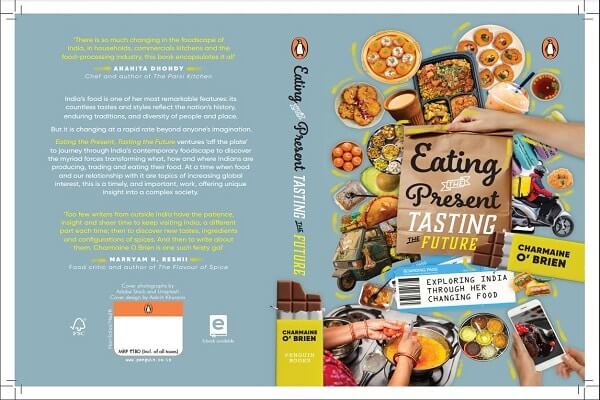Before Charmaine O’Brien came to India in 1995, her experience of Indian food was restricted to what was served at desi restaurants in Australia.
“As these restaurants served almost identical menus, I surmised that this must be what everyone ate in India, and by association, that Indians were all the same,” shares the Australian author and culinary historian.
It was only after she arrived in the subcontinent that she discovered India was actually home to many different people who spoke different languages, lived in different cultures and ate a huge diversity of food shaped by geography, climate, economics, trade, as well as social and cultural factors. She was hooked.
“I wanted to learn more about India, her long and complex history, how the place worked and how this all showed up in her food,” Charmaine O’Brien says, adding that she is still learning. “It is going to be a lifetime’s work.”

O’Brien’s latest book, Eating the Present, Tasting the Future: exploring India through her changing food, published by Penguin India, is partly a memoir of the author’s 25 years of research and writing about India’s food. But she clarifies, that the book is not solely drawn from her observations, for she has also incorporated views of Indians across the food system.
When asked why she was drawn to India’s food culture, she simply says, “India’s regional cuisines were largely made up of truly local foods, i.e., indigenous foods, were seasonal (that is, what was cooked and eaten changed all year round in line with changes in climate and with what foods were available), and that a huge range of specific dishes and drinks were made for festivals, fasts and ceremonies.”
This, she adds, stood in contrast to Australia. “In Australia, every plant and every animal food we eat (with the exception of fish and macadamia nuts) have been transplanted from somewhere else. And, most of us largely eat the same foods across our vast continent, all year round.”
In her book, O’Brien mentions that food uniquely connects Indians with many ways – food signifies community, culture, class, caste, religion, location and ethnicity. While India’s food is dynamic, it has forever been evolving over millennia, Charmaine O’Brien says.
“India’s history as trading nation is known to have gone back to at least 3 BC and trade has always bought new foods into Indian cuisines. Many of the spices we associate with Indian food are not indigenous to India, having come in from places like Indonesia (cloves, mace, nutmeg), Sri Lanka (cinnamon), Middle East (cumin, fennel, coriander). When Europeans started to establish themselves in India from the 16th century on, they introduced many new foods to India, most notably chilies, as well as potatoes, tomatoes, cashew nuts, papaya, chikoo, pineapple, capsicum, peanuts, sweet potato, coffee, corn/maize and red kidney beans (rajma).”
A lot has changed over the years, mainly because Indians like to absorb new foods into the region’s food pantheon. “It is happening at a much faster pace now,” she notes. “If a food is trending in Brooklyn (the source of many contemporary food trends) or Los Angeles or London, then Indians are adapting these trends as quickly as they see them on their ‘social’ of choice.”
Food travel shows, cookery documentaries and Internet trends have been impactful on evolving contemporary food habits in India.
During her research, O’Brien interviewed India’s leading chefs, restaurateurs, food writers and food and travel journalists and writers and many of them said that MasterChef Australia has had a huge impact on changing food in India. “This has led to the current explosion of Euro-American style cake/fine patisserie/dessert places here.”
The book is predominantly focused on urban India; O’Brien spent a lot of time in Delhi, Mumbai, Bengaluru, Hyderabad, Chennai and Ahmadabad doing research.
“I hope this book will inspire Indian readers to see how incredible food is in India. India has the most diverse regional food system in the world, and many traditional foods are exactly what fashionable food mantras are prescribing: sustainable, local, seasonal, reduced consumption of meat – India is home to the most sophisticated and extensive vegetarian cuisine with a plethora of ‘naturally’ vegan dishes.”
A very important concluding chapter also discusses the future of India’s foods. But that, she says, is for her readers to find. “I recommend people read the book,” she signs off.
Also read: A tribute to the food of Kolkata by Mohona Kanjilal




